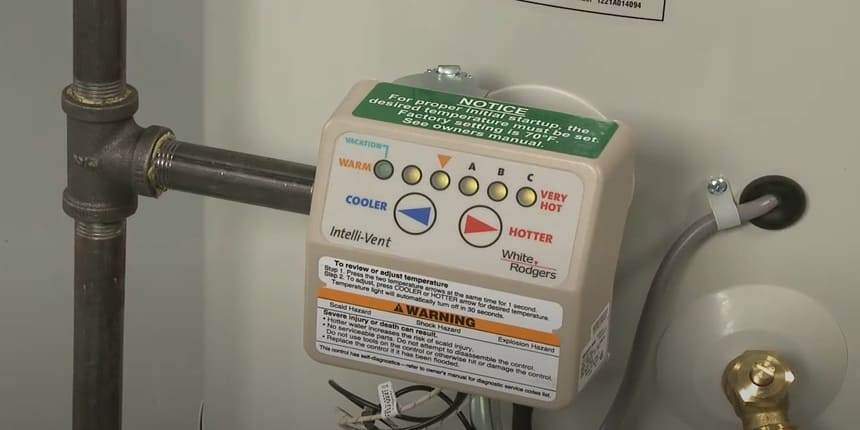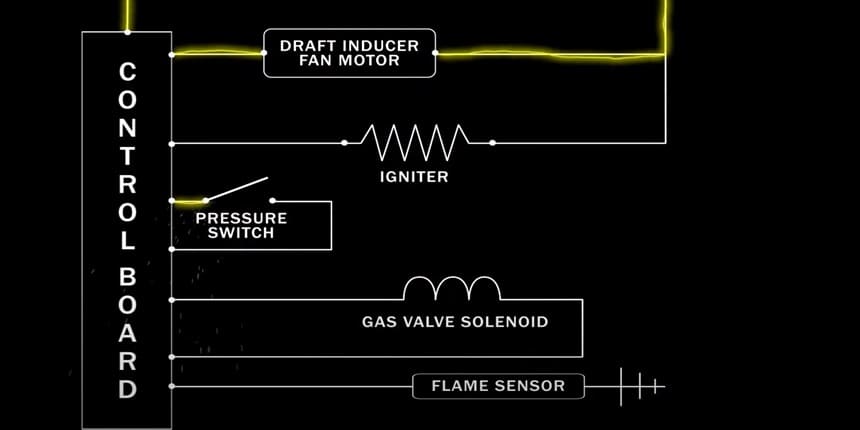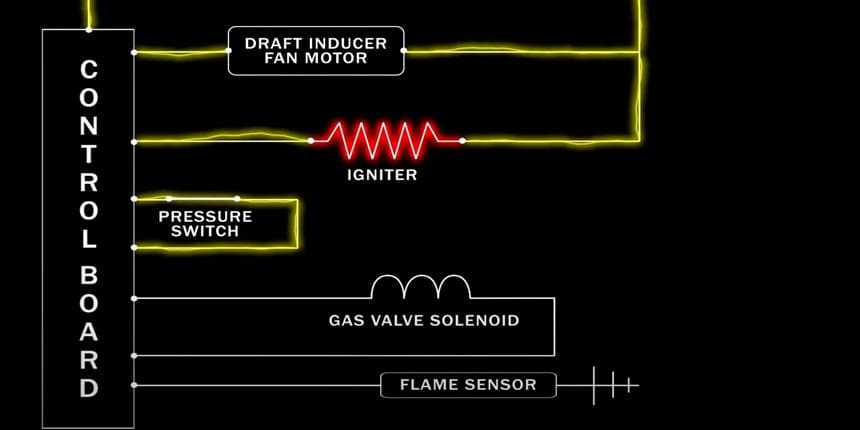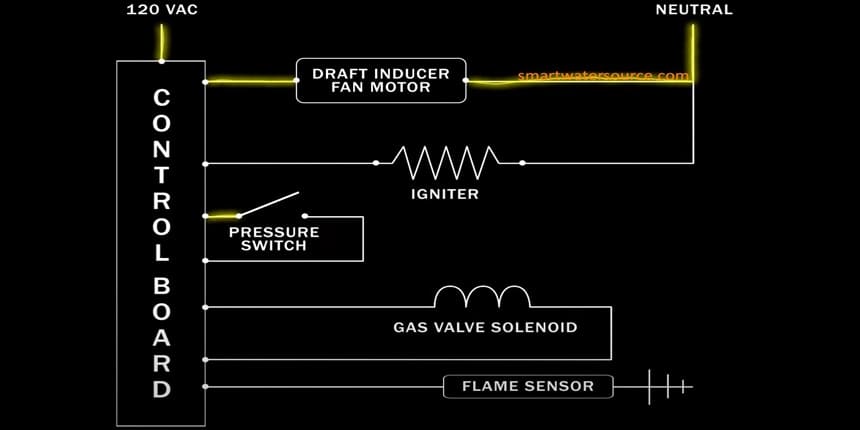A failed open pressure switch in a water heater prevents the unit from operating properly. This can lead to safety risks and inefficient heating.
A pressure switch in a water heater ensures safe operation by monitoring pressure levels. When it fails in an open position, it disrupts the unit’s functionality, potentially causing the heater to shut down or operate inefficiently. This issue can arise due to wear and tear, debris, or electrical faults.
Addressing a failed open pressure switch promptly is crucial for maintaining safety and efficiency. Regular maintenance and timely repairs can help prevent such failures, ensuring your water heater operates smoothly and reliably. Understanding the importance of this component can save you from unexpected disruptions and costly repairs.

Page Contents
- 1 Common Symptoms Of Water Heater Pressure Switch Failed
- 2 Initial Inspection for water heater pressure switch failure
- 3 Fast, Reliable Water Heater Service
- 4 Testing & troubleshooting water heater pressure switch
- 5 Replacing The Pressure Switch If water heater pressure switch not opening
- 6 Preventive Maintenance
- 7 Potential Risks
- 8 When To Call A Professional
- 9 Cost Considerations
- 10 Last Word
Common Symptoms Of Water Heater Pressure Switch Failed
A broken pressure switch often leads to no hot water. The heater can’t warm up the water. This is because the switch is stuck open. It won’t allow the heater to start. The heater must be fixed to get hot water again.
Modern heaters show error codes when there’s a problem. A failed pressure switch often shows an error code. Check the heater’s manual for the code meanings. Error codes help to find the issue quickly.
Initial Inspection for water heater pressure switch failure
Initial inspection reveals a failed open water heater pressure switch. This malfunction disrupts the heating system’s efficiency and safety.
#1. Check Power Supply

First, turn off the power to the water heater. Use a voltmeter to check the power supply. Make sure the voltage matches the heater’s requirements. If the voltage is correct, proceed to the next step. If the voltage is incorrect, contact an electrician.
#2. Inspect Pressure Switch
Locate the pressure switch on the water heater. Look for any visible damage or wear. Use a multimeter to test the switch. Set the multimeter to the continuity setting. Connect the probes to the switch terminals. If the multimeter beeps, the switch is working. If not, the switch has failed and needs replacement.
Control Pressure Perfectly for Your Heater – Shop Now!
Protect your system with durable, precise pressure regulation. Easy to install, energy-efficient, and built to last—ensuring safety, performance, and savings. Upgrade today!
Need Local Help?
Fast, Reliable Water Heater Service
Whether it’s installation, repair, or replacement, connect with a trusted local expert today. From fixing leaks and heating issues, we’ve got you covered.
Simply choose your service type in the form, share your details, and a certified water heater specialist will contact you shortly!
Smart Water Source is an informational platform that helps users connect with local plumbers. We do not directly provide plumbing services or operate as a licensed contractor.
Testing & troubleshooting water heater pressure switch
A water heater pressure switch failed open can disrupt the system’s operation. Testing the pressure switch ensures proper functionality and safety.
Using A Multimeter
A multimeter helps check if the pressure switch works. Set the multimeter to the ohms setting.
Attach the probes to the switch terminals. The display should show a specific reading.
Identifying Faulty Readings
A working switch shows a consistent reading. A bad switch often shows zero or infinite resistance.
Compare the readings with the manufacturer’s guidelines. Replace the switch if the readings are off.

Replacing The Pressure Switch If water heater pressure switch not opening
Always turn off the power before starting. Wear safety gloves and goggles. Keep a fire extinguisher nearby. Make sure the area is well-ventilated. Water heater pressure switch not opening on a hot water heater.
Let it cool down first. Check the manual for specific safety tips. Keep children and pets away from the work area. Double-check that all tools are in good condition.
First, gather all the necessary tools. Disconnect the power supply. Locate the pressure switch on the water heater. Carefully remove the old pressure switch. Follow the manual for proper removal.
Install the new pressure switch. Make sure it fits tightly. Reconnect the power supply. Turn on the water heater. Check for any leaks or errors. Test the pressure switch to ensure it works. If unsure, consult a professional.
Preventive Maintenance
When a water heater pressure switch fails open, and water heater pressure switch failure it disrupts the system’s operation, leading to potential issues.
Preventive maintenance can help detect and address such failures early, ensuring the water heater functions efficiently and avoids costly repairs. Regular checks and timely replacements can prevent unexpected breakdowns.
Regular Inspections & troubleshooting pressure switch problems

Inspect the water heater every three months. Look for any signs of wear and tear. Check the pressure switch for any damage. Ensure all connections are tight and secure. Replace any worn-out parts immediately. Keep a log of all inspections. This helps in tracking issues.
Cleaning Tips
Clean the heater with a soft cloth. Avoid using harsh chemicals. Remove any dust and debris around the unit. Keep the ventilation areas clear. This ensures proper airflow. Clean the pressure switch gently. Dirt can cause it to fail. A clean heater works better and lasts longer
Potential Risks
A failed open water heater pressure switch can lead to dangerous pressure buildup. This malfunction poses serious risks, including potential explosions and water damage. Regular maintenance is crucial to prevent such hazards.
| Potential Risks |
| Water Damage |
| A failed open pressure switch can lead to water damage in the surrounding area. If the switch doesn’t activate the heater, the tank can overflow, causing flooding. Electrical Hazards Apart from water damage, a malfunctioning switch can pose electrical risks. Exposed electrical components may lead to shocks or even fires. Regular maintenance and prompt repairs can prevent these risks. |
When To Call A Professional
Some water heater issues are too complex. Pressure switch failures can be tricky. Incorrect handling can cause more damage. Professional help ensures safety and proper repairs. They have the right tools and knowledge.
A failed pressure switch can void a warranty. Professionals know how to fix it without breaking terms. They ensure work meets warranty standards. Calling them protects your warranty and your heater.
Cost Considerations
Replacing a water heater pressure switch can cost a lot when your hot water heater pressure switch not working. Pressure switches are not very expensive.
They usually cost between $20 and $50. Prices depend on the brand and model. Buying online can sometimes be cheaper. Make sure to buy the right part for your heater.
Control Pressure Perfectly for Your Heater – Shop Now!
Protect your system with durable, precise pressure regulation. Easy to install, energy-efficient, and built to last—ensuring safety, performance, and savings. Upgrade today!
Labor costs can add up quickly. Hiring a professional can cost between $75 and $150 per hour. Sometimes, the job takes more than an hour. This can make the bill higher. DIY can save money but might be risky. Always consider safety first.
Last Word
A failed open water heater pressure switch can cause significant issues. Regular maintenance can prevent such failures. Always consult a professional for repairs. Proper care ensures your water heater operates efficiently. Stay proactive to avoid unexpected breakdowns. Addressing problems early saves time and money.
Keep your water heater in top condition for peace of mind.
